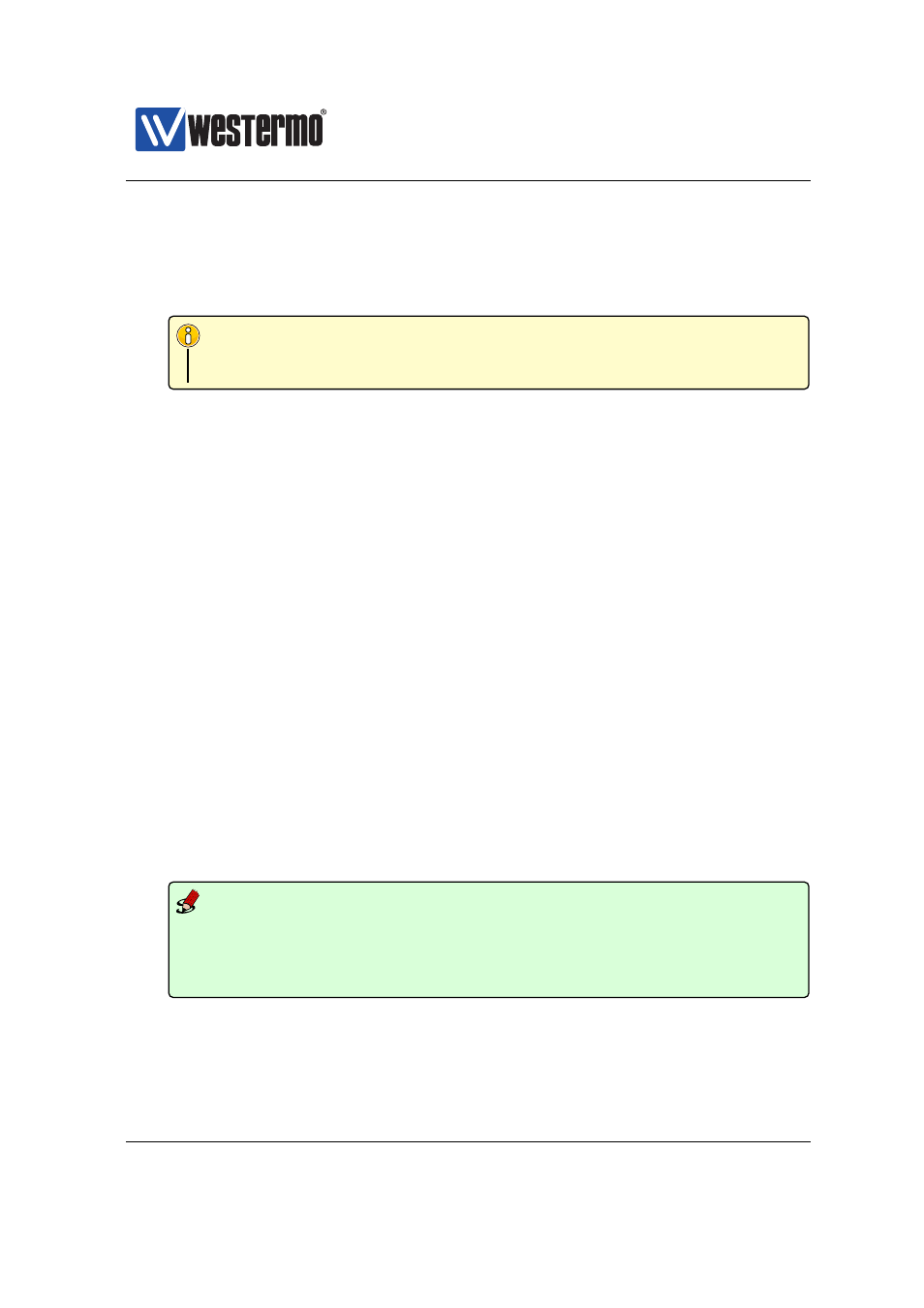Section 36.1.6 – Westermo RedFox Series User Manual
Page 849

Westermo OS Management Guide
Version 4.17.0-0
and off by measuring its usefulness (if the data transmitted is determined to
already be sufficiently compressed, additional LZO compression is disabled).
Default setting is ”compression adaptive”, i.e., compression is enabled in
adaptive mode.
Note
As of WeOS v4.17.0, the compression setting at the VPN client and VPN
server must match.
36.1.6
Related settings
An SSL tunnel is represented as a network interface in WeOS, and can be config-
ured for routing, NAT and Firewall as other network interfaces. Additional hints
on routing and firewall/NAT settings when using SSL VPNs are provided in the
following sections.
36.1.6.1
Routing and SSL VPNs
In HOST-NET setups (
, the VPN server typically pushes routing information
for relevant IP subnets to the VPN clients during tunnel establishment (see also
Below some other aspects of routing and SSL VPNs are listed:
❼ Blackhole routes: To ensure that traffic intended to be sent encrypted via
your SSL tunnel is dropped by your VPN client or server when the tunnel is
down, you can use blackhole routes (
). An example for Alice
in
is shown below, but a similar configuration can be used at the
VPN client (Bob).
Example
alice:/config/#> ip
alice:/config/ip/#> route 10.0.0.0/16 null0 200
alice:/config/ip/#> leave
Configuration activated.
Remember "copy run start" to save to flash (NVRAM).
alice:/#>
❼ Routing in NET-NET use case: In the NET-NET setup shown in
there
are some different alternatives for Alice and Bob to learn about the routes
available at the peer side.
➞ 2015 Westermo Teleindustri AB
849